Cover photo by Corrie du Toit.
Find the Sooty Threadtail in the FBIS database (Freshwater Biodiversity Information System) here.
Family Platycnemididae
Identification

Seweweekspoort, Western Cape
Photo by Ryan Tippett
Small size
Length up to 35mm; Wingspan attains 46mm
Male Sooty Threadtails are easily identified by their elongate build and dark colouration. Females are very similar to those of Elattoneura glauca (Common Threadtail), but are generally darker. Best told by their association with the males.
Click here for more details on identification.
Habitat
The Sooty Threadtail inhabits mountainous areas. It frequents well-vegetated, flowing streams and rivers, ideally with pools and slow-moving sections. It is often found among tall grass and other rank vegetation along the riverbank.

Photo by Sharon Stanton
Behaviour
The Sooty Threadtail perches low down on grass stems and other stream side vegetation. It frequently sits on rocks or bare ground close to the water. Females are usually found in the same vicinity as the males. The Sooty Threadtail is generally sluggish and reluctant to fly. It does not fly far once disturbed and quickly resettles on a perch.
Most active from October to March (See Phenology below).
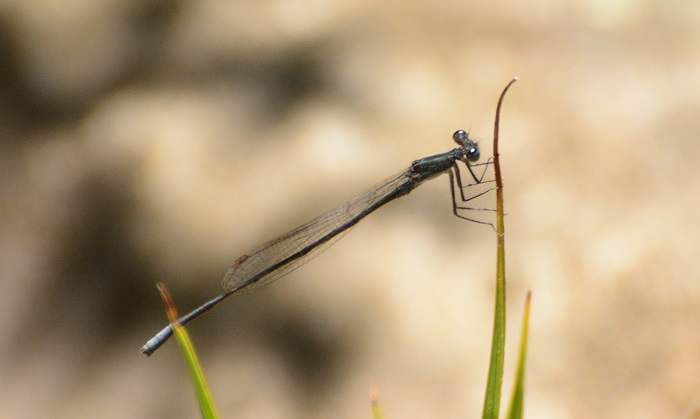
Tradouw’s Pass, Western Cape
Photo by Ryan Tippett
Status and Conservation
Although it has a restricted distribution, the Sooty Threadtail is locally common. It is listed as of Least Concern in the IUCN Red List of Threatened Species. The Sooty Threadtail is moderately sensitive to habitat damage. It requires clean, clear water, but it does occur in habitats with some alien vegetation. The Sooty Threadtail will also readily make use of suitable, small, man-made impoundments along streams and rivers.
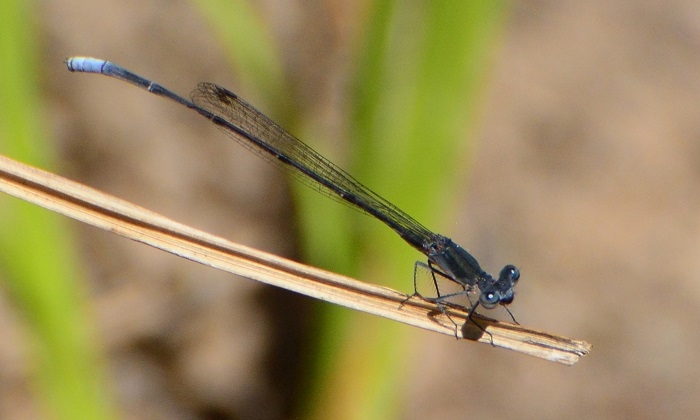
Vanrhynsdorp Waterfall, Western Cape
Photo by Ryan Tippett
Distribution
The Sooty Threadtail is endemic to South Africa. It is widespread in the mountainous regions of the Western Cape, extending marginally into the Eastern Cape province.
Below is a map showing the distribution of records for Sooty Threadtail in the OdonataMAP database as at February 2020.

Below is a map showing the distribution of records for Sooty Threadtail in the OdonataMAP database as of December 2024.

The next map below is an imputed map, produced by an interpolation algorithm, which attempts to generate a full distribution map from the partial information in the map above. This map will be improved by the submission of records to the OdonataMAP section of the Virtual Museum.


Ultimately, we will produce a series of maps for all the odonata species in the region. The current algorithm is a new algorithm. The objective is mainly to produce “smoothed” maps that could go into a field guide for odonata. This basic version of the algorithm (as mapped above) does not make use of “explanatory variables” (e.g. altitude, terrain roughness, presence of freshwater — we will be producing maps that take these variables into account soon). Currently, it only makes use of the OdonataMAP records for the species being mapped, as well as all the other records of all other species. The basic maps are “optimistic” and will generally show ranges to be larger than what they probably are. These maps use the data in the OdonataMAP section of the Virtual Museum, and also the database assembled by the previous JRS funded project, which was led by Professor Michael Samways and Dr KD Dijkstra.
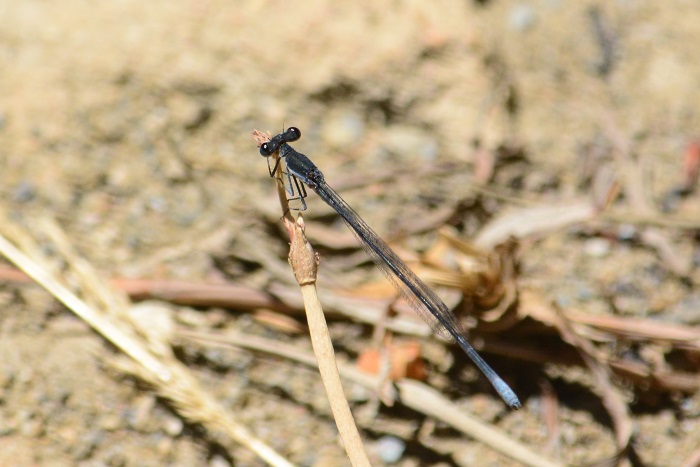
Seweweekspoort, Western Cape
Photo by Ryan Tippett
Phenology


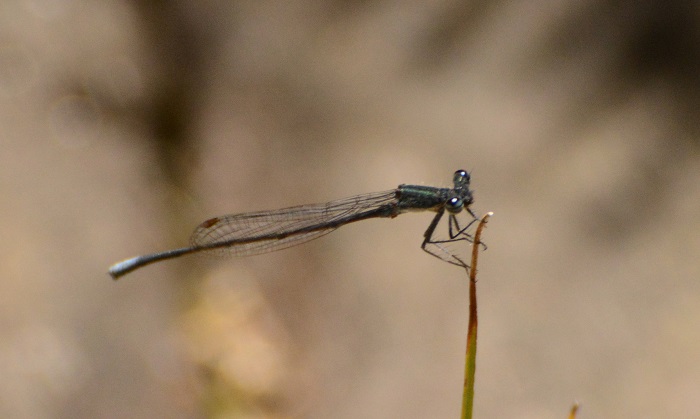
Tradouw’s Pass, Western Cape
Photo by Ryan Tippett
Further Resources
The use of photographs by Corrie du Toit and Sharon Stanton is acknowledged. All other photographs by Ryan Tippett.
Sooty Threadtail Elattoneura frenulata (Hagen, 1860)
Other common names: Roetswartdraadstertjie (Afrikaans)
Recommended citation format: Loftie-Eaton M; Navarro R; Tippett RM; Underhill L. 2025. Sooty Threadtail Elattoneura frenulata. Biodiversity and Development Institute. Available online at https://thebdi.org/2020/04/17/sooty-threadtail-elattoneura-frenulata/
References: Tarboton, M; Tarboton, W. (2019). A Guide to the Dragonflies & Damselflies of South Africa. Struik Nature.
Samways, MJ. (2008). Dragonflies and Damselflies of South Africa. Pensoft
Samways, MJ. (2016). Manual of Freshwater Assessment for South Africa: Dragonfly Biotic Index. Suricata 2. South African National Biodiversity Institute, Pretoria
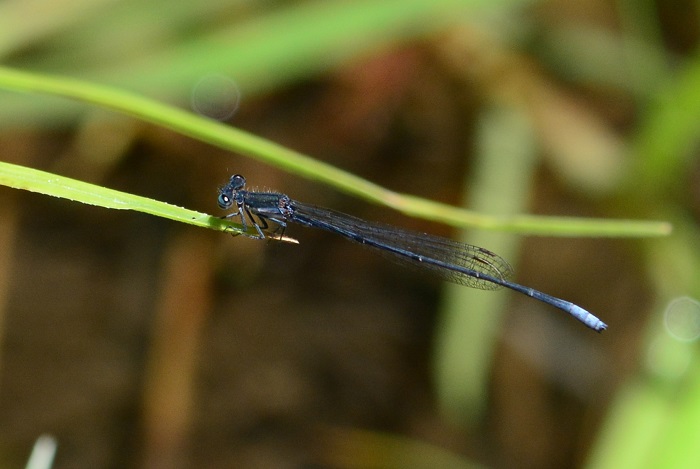
Seweweekspoort, Western Cape
Photo by Ryan Tippett

